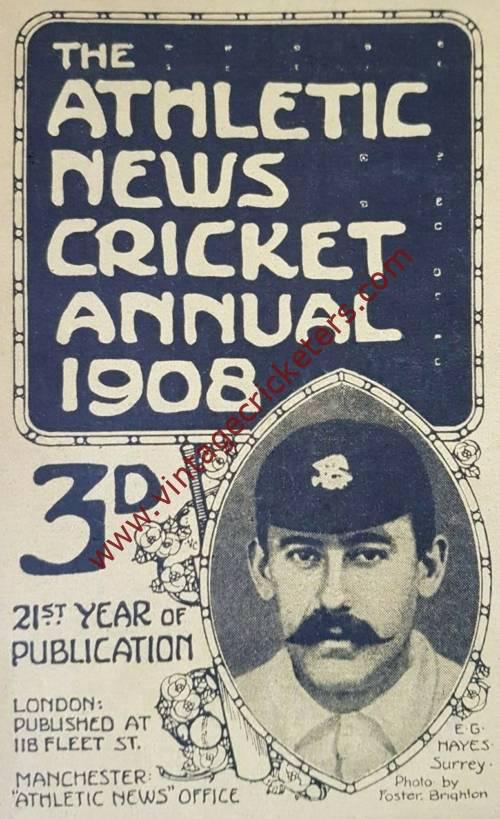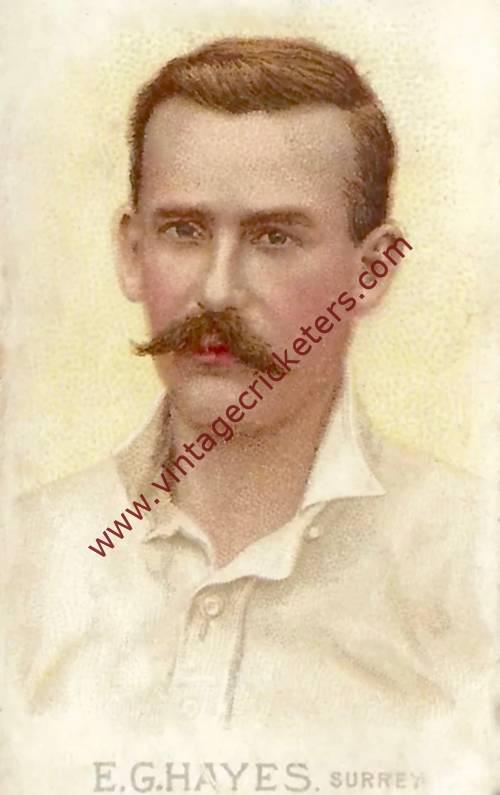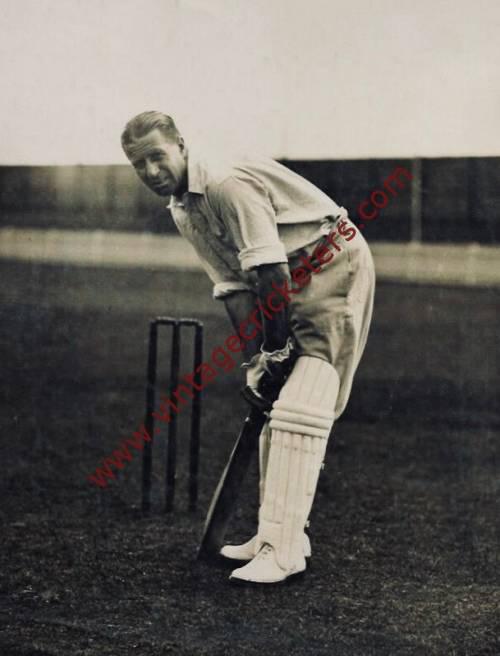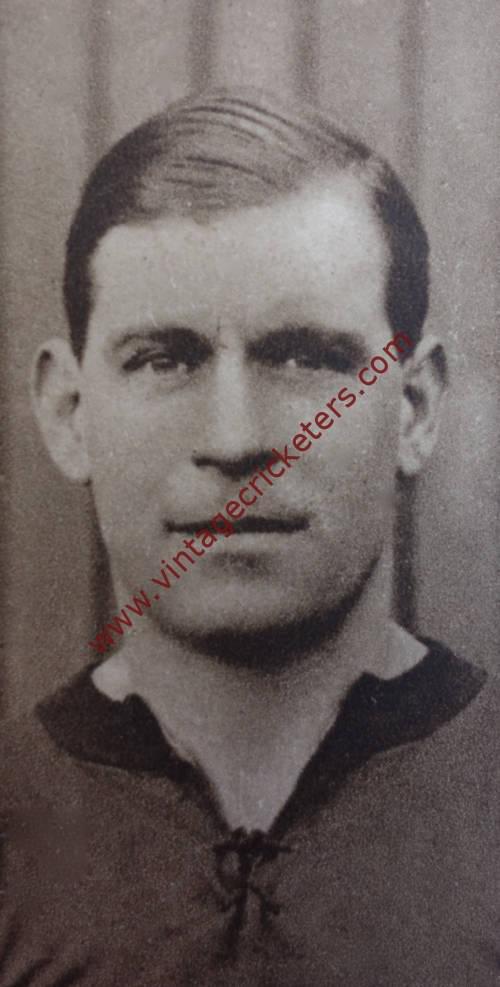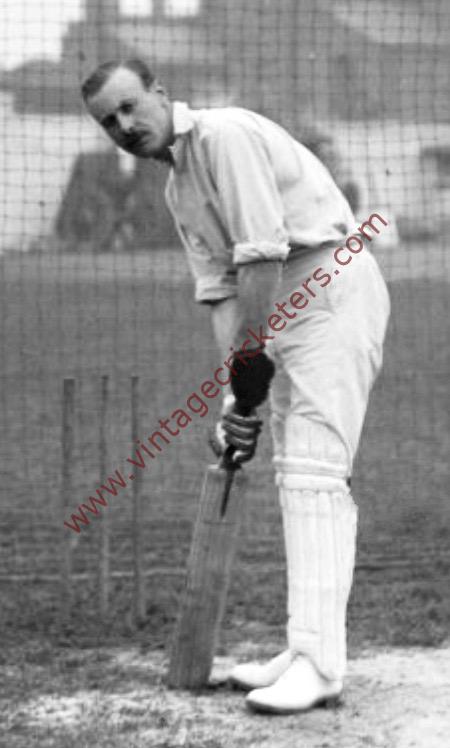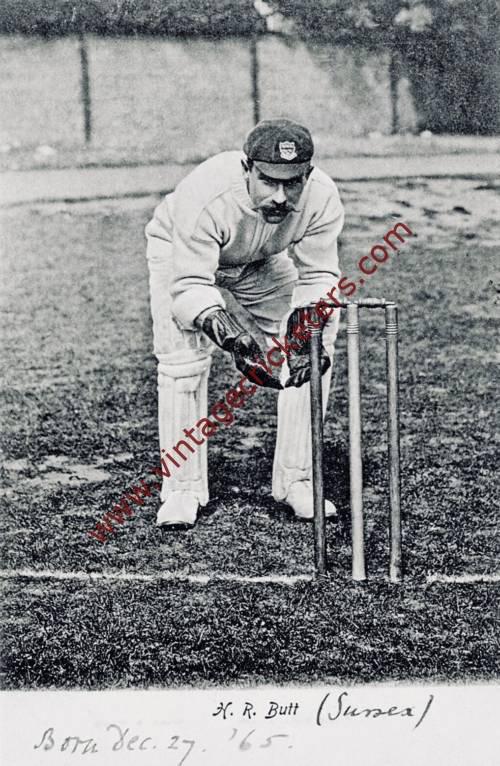Please choose your photo size from the drop down menu below.
If you wish your photo to be framed please select Yes.
Note: 16″x 20″not available in a frame.
Images can also be added to accessories. To order please follow these links
£8.95 – £49.95
Please choose your photo size from the drop down menu below.
If you wish your photo to be framed please select Yes.
Note: 16″x 20″not available in a frame.
Images can also be added to accessories. To order please follow these links
The maximum number of views of this element is reached.
Please contact the webmaster to enable unlimited views.
Peckham, London born right-handed batsman Ernie Hayes usually batted at No 3 and was among the finest batsmen of his day. Especially strong in driving, he also pulled fearlessly and was always attractive to watch. He first appeared for Surrey in 1896 and was a regular in the Surrey side for 15 years up to the outbreak of the First World War, scoring 1,000 runs and more in every season from 1899 to 1914. His best year was 1906 when he scored 2,309 runs at an average of more than 45 runs an innings, and he was named as a Wisden Cricketer of the Year in 1907. His highest score, 276, was made against Hampshire in 1909 at The Oval, when he shared a second wicket partnership of 371 with Jack Hobbs that remains a Surrey record.
Hayes’ Test match career was not a success. He went to South African under Pelham Warner in 1905-06 and played in three of the Tests in the first series ever wonby the South Africans against England, with his Test debut coming at Johannesburg in January 1906. He scored just 69 runs in his three matches, with a top score of 35 in the Second Test and he bagged a pair at Cape Town in the Third. He also went on the 1907-08 tour to Australia, but his form was so poor that he was not picked for any of the Tests. In 1909, he played once in a home Test against the Australians at The Oval in August 1909, but though the match was won, he scored only 13 runs in his two innings. Finally, he was recalled for one match against South Africa at The Oval in August 1912 in the 1912 Triangular Tournament series, and scored just four runs in his only innings. He did also take a wicket with his bowling, clean bowling Bert Vogler late in the second innings as South Africa won his debut Test match in exciting fashion by a single wicket with their last pairing.
After distinguished service during the First World War, in which he served with the Sportsman’s Battalion, that won him the MBE, Hayes returned to Surrey as an amateur in 1919, but retired after just one season. He was afflicted with a contracture of the fingers of the right hand attributed to years of fielding at slip to the stinging pace of Tom Richardson and William Lockwood, creating difficulty in gripping a bat, but nevertheless in his last season for Surrey he scored 153 against Hampshire at Southampton, where he and Andy Ducat shared a third wicket partnership of 353 in 165 minutes. He moved to Leicestershire as coach and Second Eleven captain, and was so successful that, in 1926, at the age of 49, he was picked for five first team matches, scoring 99 against Nottinghamshire in his first game and heading the County’s averages with 36.28. He also played for London County in the early 1900’s. He represented The Players against The Gentlemen on many occasions, being captain at The Oval in 1914.
Hayes’ leg-break bowling was intermittently useful: in 1905, he took 76 wickets, and in 1912 another 60, but in other seasons he took very few and was expensive. In all 560 first class cricket matches, he scored 27,318 runs at an average of 32.21 with 48 centuries and 142 half centuries, and took 515 wickets with his bowling at 26.70 apiece with a best return of 8-22, including twice taking ten wickets or more in a match and a dozen five wicket innings hauls. As a fine slip fielder, he took 608 catches in all matches.
He later returned to The Oval as coach at Surrey from 1929, retiring in 1934.
Vintage Cricketers was founded in July 2019. There are more photographs of this cricketer in the Vintage Cricketers library, which are due to be loaded in due course. In the meantime, please send a message to us using the contact form at the bottom left of this page and we can arrange to prepare and publish all images of this cricketer if you have a particular interest in him.
| Weight | N/A |
|---|
